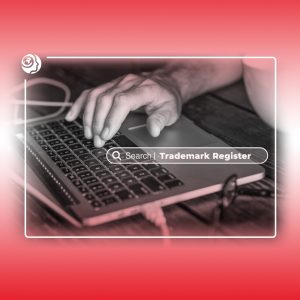The process of trademark registration in Egypt is a structured legal procedure that requires following specific steps to ensure application approval and full protection of your mark. Whether you’re looking to register a trademark locally or preparing for international trademark registration, understanding these steps is crucial to avoid mistakes that could delay approval or lead to rejection. In this section, we’ll examine the practical registration stages in detail, from preliminary searches to certificate issuance.
1. Preliminary Trademark Search
Before submitting your trademark registration in Egypt application, you must verify that your mark isn’t already registered in the same class. This search can be conducted through:
A. Egyptian Trademark Office Database
The Egyptian Trademark Office (under the Ministry of Trade and Industry) provides an online search service through its official website to check for similar existing marks.
B. Hiring an Intellectual Property Lawyer
Many applicants choose to consult an IP law specialist to avoid legal pitfalls, especially for complex marks or those intended for international trademark registration.
Note: It’s advisable to search related classes beyond your target category to avoid future conflicts.
2. Preparing Required Documents
After confirming your mark’s availability, prepare these documents:
| Document | Details |
|---|
| Registration Application | Official form (electronic or manual) containing applicant details |
| Trademark Image | Clear, high-quality image if containing a logo or design |
| Business License | Commercial register or industrial license proving trademark ownership |
| Power of Attorney | Required if filing through an agent (lawyer or specialized firm) |
| Fee Payment Proof | Paid electronically or through designated banks |
3. Submitting the Application to Authorities
Applications are submitted to the Egyptian Trademark Office through:
A. Online Submission
B. In-Person Submission
4. Legal Examination and Opposition Period
After submission, your application undergoes two key phases:
A. Formality Examination
Officials verify document completeness. Incomplete applications receive a deficiency notice with a deadline for corrections.
B. Substantive Examination and Gazette Publication
The mark is examined for distinctiveness and potential conflicts
Approved marks are published in Egypt’s Official Trademark Gazette
A 60-day opposition period begins upon publication
C. Handling Oppositions
Third parties may file oppositions during the 60-day window
Applicants must respond legally within specified timelines
Complex oppositions may take months to resolve
5. Registration Certificate Issuance
If no oppositions are filed (or successfully resolved), the Trademark Registration Certificate is issued, valid for 10 years and renewable.
Trademark Registration Timeline in Egypt
| Stage | Estimated Duration | Notes |
|---|
| Preliminary Search | 1-7 days | Depends on search complexity |
| Application Submission | 2-4 weeks | May extend if document errors exist |
| Examination/Publication | 3-6 months | Includes opposition period |
| Certificate Issuance | 1-2 months post-opposition | – |
6. Tips for Successful Trademark Registration in Egypt
Choose a distinctive mark: Avoid generic/descriptive terms
Register in correct classes: Cover current and future business activities
Monitor application status: Track for oppositions or missing documents
Consider international protection: Begin international trademark registration via the Madrid System if expanding globally
Conclusion
The trademark registration in Egypt process requires patience and precision from initial search to final certification. In Part Four, we’ll explore the more complex process of international trademark registration, explaining systems like Madrid and WIPO and how to protect your mark in global markets.
Continue to Part Four: “International Trademark Registration” where we’ll cover global protection procedures and key international systems available.
Call us now:






